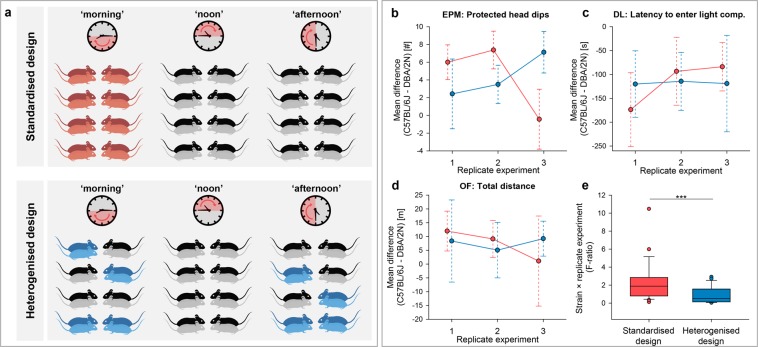Figure 3.
Comparison of a standardised and a heterogenised design: effects on between-replicate experiment reproducibility. (a) Displayed is the selection of mice to mimic one out of three standardised (red) and one out of three heterogenised replicate experiments (blue). All mice were sampled once to be part of the standardised design and once as part of the heterogenised design. In the standardised replicate experiments, all subsampled mice (n = 8) shared the same experimental background regarding the factor ‘time’. In the heterogenised design, matched pairs of C57BL/6J (dark red or dark blue mice, respectively) and DBA/2N mice (light red or light blue mice, respectively; n = 8) were randomly39 selected out of two different testing time groups to represent one replicate experiment. Matched pairs of mice lived in neighbouring cages, thus sharing the same microenvironment. Additionally, these mice were tested on the same day. (b–d) Comparisons of indicated measures from (b) elevated plus-maze (EPM), (c) dark-light (DL), and (d) open-field (OF) tests, showing mean strain differences (circles) with their 95% confidence intervals (dashed lines) across the three replicate experiments. (e) F-ratios of the ‘strain-by-replicate experiment’ interaction term were calculated separately for the two experimental designs across all 20 behavioural measures and compared using the 1-tailed Wilcoxon signed-rank test, Z = −2.912, ***p = 0.001, The analysis was based on previously published calculations22.

